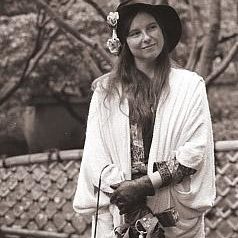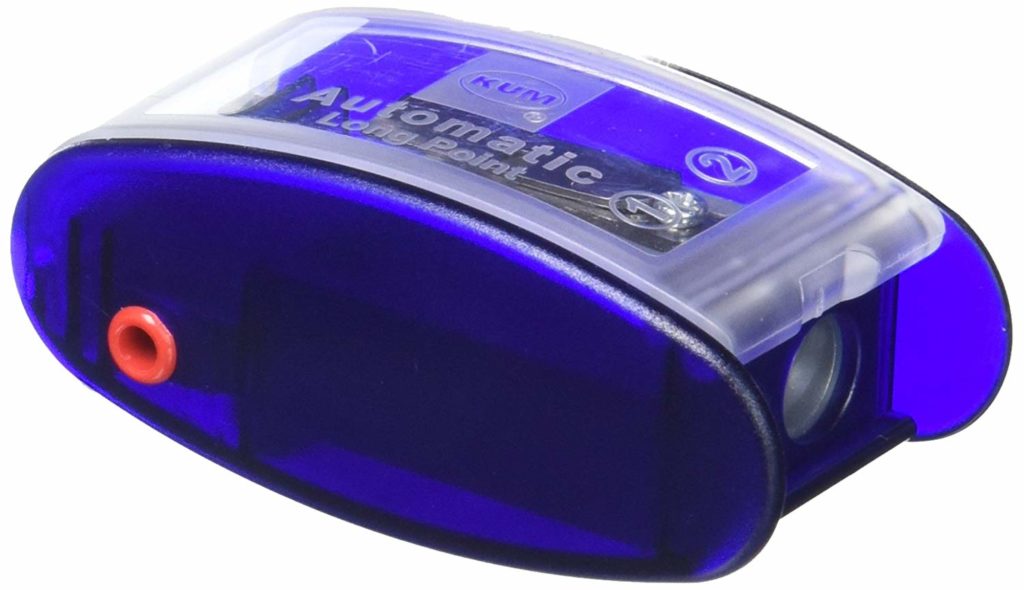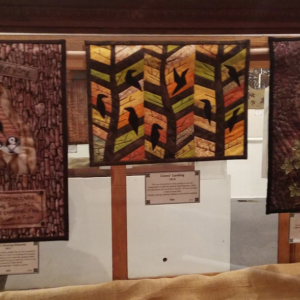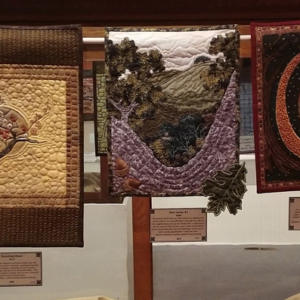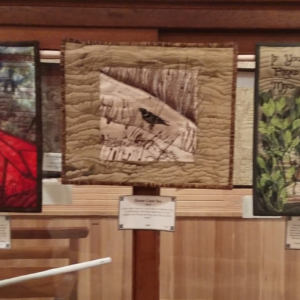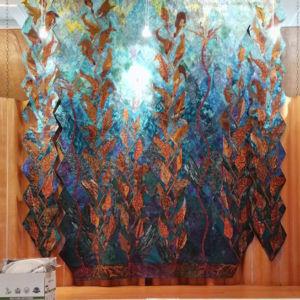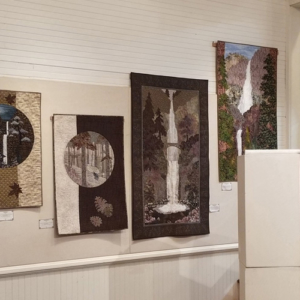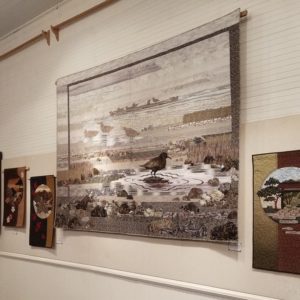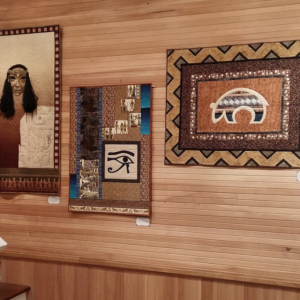Remember the old Pete Seeger song from the 60’s – ‘Where Have All the Flowers Gone?’ These poignant lyrics can be applied to quilt shops as yet another one closes it’s doors. A sad farewell to Sewn Loverly in Wilsonville Oregon which closed earlier this month. When I moved to Portland in 1991, I was astounded by the number and variety of quilt shops here. Some might argue that having many shops diluted the market and made for stiff competition between the shops but from the standpoint of a quilter, few shops can carry EVERYTHING you might want and having that many stores made for access to a very diverse selection of fabrics to suit every taste.
Most stores had a decent selection across a wide range of fabrics but with an emphasis on a particular style or genre. Momma Made It, specialized in Civil War fabrics – I never realized there were so many of these available until I first visited that shop years ago – it is now gone. Scarborough Flair – also long gone – carried every single fabric in the RJR Jinny Beyer collections. Cedar Ridge quilts which opened in the last couple of years in Oregon City, carries a wonderful selection of floral and botanical prints – those who enjoy Laura Heine’s collage quilts will find plenty to chose from here. A Common Thread at one time had the best collection of Batik fabrics to be had, now that it too is gone along with Fabric Depot, that honor can be shared by Pioneer Quilts (Milwaukie) and Sharon’s Attic (Aloha) who are still open and both carry a large selection of these beautiful favorites, and Pioneer Quilts has arguably the best selection of wool for the Sue Spargo and Primitive Gatherings fans but for how long? I heard that last year Oregon and southwestern Washington lost over a dozen quilt shops. A few new shops have opened here and there but for the most part these stores left a void when they closed.
A quilt shop needs customers to survive and they need steady traffic and sales to keep their doors open. We are told the economy is booming but this isn’t ‘trickling down’ to the quilt shops, many of them are still struggling to stay in business. They need a consistent base of buying customers to keep their doors open, popping in once in a while when you need some thread or to buy a quilt back is not going to do it, quilters need to support their local quilt shops – please – do your part to keep them in business.
Despite being a huge box store, it’s true that when you shop at JoAnn’s you are helping a local person stay employed but shopping there is a different retail experience. When was the last time a JoAnn’s employee helped you pick just the right combination of fabrics for a quilt pattern you were making? Do they come out from behind the counter and help you pick the correct color of thread to coordinate with your fabrics? Can they tell you which kind of batting is better for hand vs. machine quilting? Will they even try to help you calculate how much more fabric you will need to take a twin sized quilt pattern and bump it up to a queen size? And do they carry some of the quilting specialty items like Sashiko needles, or Golden Threads Quilting Paper? If you value these products and services you need to shop at your local quilt store.
Support diversity, support your local quilt shops and small business sewing machine shops, don’t let another small business quilt/sewing machine shop close its doors if you can help it.
